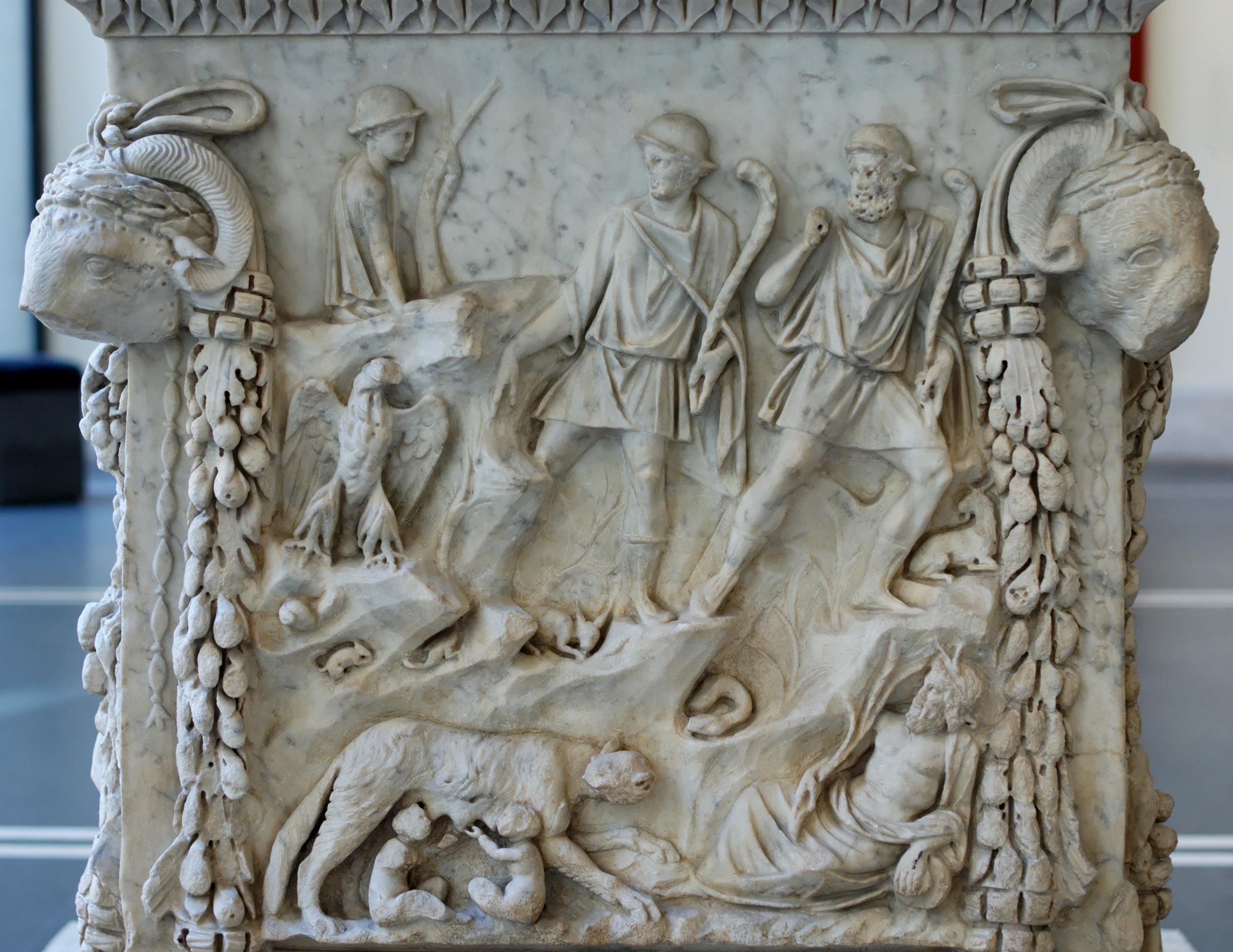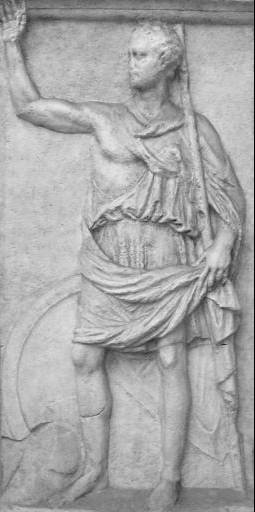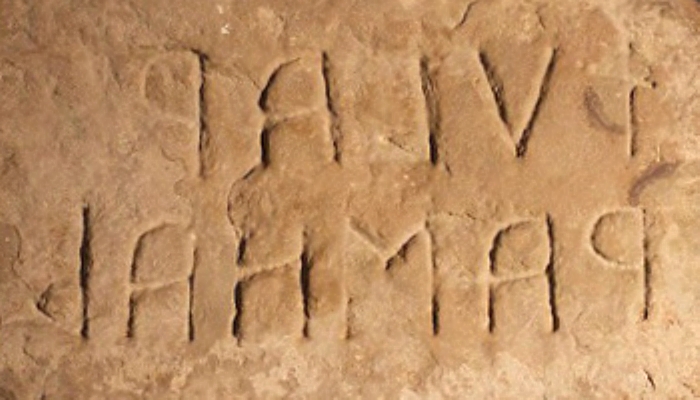|
Ab Urbe Condita Libri
The ''History of Rome'', perhaps originally titled , and frequently referred to as (), is a monumental history of ancient Rome, written in Latin between 27 and 9 BC by the Roman historian Titus Livius, better known in English as "Livy". The work covers the period from the legends concerning the arrival of Aeneas and the refugees from the fall of Troy, to the city's founding in 753 BC, the expulsion of the Kings in 509 BC, and down to Livy's own time, during the reign of the emperor Augustus. The last event covered by Livy is the death of Drusus in 9 BC. 35 of 142 books, about a quarter of the work, are still extant. The surviving books deal with the events down to 293 BC (books 1–10), and from 219 to 166 BC (books 21–45). Contents Corpus The ''History of Rome'' originally comprised 142 "books", 35 of which—Books 1–10 with the Preface and Books 21–45—still exist in reasonably complete form. Damage to a manuscript of the 5th century resulted ... [...More Info...] [...Related Items...] OR: [Wikipedia] [Google] [Baidu] |
Altar Mars Venus Massimo
An altar is a table or platform for the presentation of religious offerings, for sacrifices, or for other ritualistic purposes. Altars are found at shrines, temples, churches, and other places of worship. They are used particularly in Christianity, Buddhism, Hinduism, and modern paganism. Many historical-medieval faiths also made use of them, including the Roman, Greek, and Norse religions. Etymology The modern English word ''altar'' was derived from Middle English ''altar'', from Old English '' alter'', taken from Latin ''altare'' ("altar"), probably related to '' adolere'' ("burn"); thus "burning place", influenced by '' altus'' ("high"). It displaced the native Old English word '' wēofod''. Altars in antiquity In antiquity, altars were used for making sacrifices to deities; this could include both libations and animal sacrifice. In Ancient Roman religion, altars were often inscribed with the donor's name and the deity to whom the altar was dedicated. One of the most ... [...More Info...] [...Related Items...] OR: [Wikipedia] [Google] [Baidu] |
Seneca The Elder
Lucius Annaeus Seneca the Elder ( ; – c. AD 39), also known as Seneca the Rhetorician, was a Roman writer, born of a wealthy equestrian family of Corduba, Hispania. He wrote a collection of reminiscences about the Roman schools of rhetoric, six books of which are extant in a more or less complete state and five others in epitome only. His principal work, a history of Roman affairs from the beginning of the Civil Wars until the last years of his life, is almost entirely lost to posterity. Seneca lived through the reigns of three significant emperors; Augustus (ruled 27 BC – 14 AD), Tiberius (ruled 14–37 AD) and Caligula (ruled 37–41 AD). He was the father of Lucius Junius Gallio Annaeanus, best known as a Proconsul of Achaia; his second son was the dramatist and Stoic philosopher Seneca the Younger (''Lucius''), who was tutor of Nero, and his third son, Marcus Annaeus Mela, became the father of the poet Lucan. Biography Seneca the Elder is the first of the gens ... [...More Info...] [...Related Items...] OR: [Wikipedia] [Google] [Baidu] |
Gaius Marius
Gaius Marius (; – 13 January 86 BC) was a Roman general and statesman. Victor of the Cimbrian War, Cimbric and Jugurthine War, Jugurthine wars, he held the office of Roman consul, consul an unprecedented seven times. Rising from a family of smallholders in a village called Ceraetae in the district of Arpinum, Marius acquired his initial military experience serving with Scipio Aemilianus at the Siege of Numantia in 134 BC. He won election as tribune of the plebs in 119 BC and passed a law limiting aristocratic interference in elections. Barely elected praetor in 115 BC, he next became the governor of Further Spain where he campaigned against bandits. On his return from Spain he married Julia (wife of Marius), Julia, the aunt of Julius Caesar. Marius attained his first consulship in 107 BC and became the commander of Roman forces in Numidia, where he brought an end to the Jugurthine War. By 105 BC Rome faced an invasion by the Cimbri and Teutones, and ... [...More Info...] [...Related Items...] OR: [Wikipedia] [Google] [Baidu] |
Social War (91–88 BC)
Social War may refer to: * Social War (357–355 BC), or the War of the Allies, fought between the Second Athenian Empire and the allies of Chios, Rhodes, and Cos as well as Byzantium * Social War (220–217 BC), fought among the southern Greek states * Social War (91–87 BC) The Social War (from Latin , "war of the allies"), also called the Italian War or the Marsic War, was fought largely from 91 to 88 BC between the Roman Republic and several of its autonomous allies () in Roman Italy, Italy. Some of the ..., or the Italian or Marsic War, fought between the Roman Republic and several Italian cities * '' The Social War'', an 1872 novel by Simon Mohler Landis {{disambig ... [...More Info...] [...Related Items...] OR: [Wikipedia] [Google] [Baidu] |
Second Punic War
The Second Punic War (218 to 201 BC) was the second of Punic Wars, three wars fought between Ancient Carthage, Carthage and Roman Republic, Rome, the two main powers of the western Mediterranean Basin, Mediterranean in the 3rd century BC. For 17 years the two states struggled for supremacy, primarily in Roman Italy, Italy and Iberia, but also on the islands of Sicily and Sardinia and, towards the end of the war, in North Africa. After immense materiel and human losses on both sides, the Carthaginians were once again defeated. Macedonia (ancient kingdom), Macedonia, Kingdom of Syracuse, Syracuse and several Numidians, Numidian kingdoms were drawn into the fighting, and Celtiberians, Iberian and Gauls, Gallic forces fought on both sides. There were three main Theater (military), military theatres during the war: Italy, where Hannibal defeated the Roman legions repeatedly, with occasional subsidiary campaigns in Sicily, Sardinia and Greece; Iberia, where Hasdrubal (Barcid), Hasdru ... [...More Info...] [...Related Items...] OR: [Wikipedia] [Google] [Baidu] |
First Punic War
The First Punic War (264–241 BC) was the first of three wars fought between Rome and Carthage, the two main powers of the western Mediterranean in the early 3rd century BC. For 23 years, in the longest continuous conflict and greatest naval war of antiquity, the two powers struggled for supremacy. The war was fought primarily on the Mediterranean island of Sicily and its surrounding waters, and also in North Africa. After immense losses on both sides, the Carthaginians were defeated and Rome gained territory from Carthage. The war began in 264 BC with the Romans gaining a foothold on Sicily at Messana (modern Messina). The Romans then pressed Syracuse, the only significant independent power on the island, into allying with them and laid siege to Carthage's main base at Akragas. A large Carthaginian army attempted to lift the siege in 262 BC but was heavily defeated at the Battle of Akragas. The Romans then built a navy to challenge the Carthaginians ... [...More Info...] [...Related Items...] OR: [Wikipedia] [Google] [Baidu] |
Etruscan Civilization
The Etruscan civilization ( ) was an ancient civilization created by the Etruscans, a people who inhabited Etruria in List of ancient peoples of Italy, ancient Italy, with a common language and culture, and formed a federation of city-states. After adjacent lands had been conquered its territory covered, at its greatest extent, roughly what is now Tuscany, western Umbria and northern Lazio, as well as what are now the Po Valley, Emilia-Romagna, south-eastern Lombardy, southern Veneto and western Campania. A large body of literature has flourished on the origins of the Etruscans, but the consensus among modern scholars is that the Etruscans were an indigenous population. The earliest evidence of a culture that is identifiably Etruscan dates from about 900 BC. This is the period of the Iron Age Villanovan culture, considered to be the earliest phase of Etruscan civilization, which itself developed from the previous late Bronze Age Proto-Villanovan culture in the same region, p ... [...More Info...] [...Related Items...] OR: [Wikipedia] [Google] [Baidu] |
Volsci
The Volsci (, , ) were an Italic tribe, well known in the history of the first century of the Roman Republic. At the time they inhabited the partly hilly, partly marshy district of the south of Latium, bounded by the Aurunci and Samnites on the south, the Hernici on the east, and stretching roughly from Norba and Cora in the north to Antium in the south. Rivals of Rome for several hundred years, their territories were taken over by and assimilated into the growing republic by 304 BC. Rome's first emperor Augustus was of Volscian descent. Description by the ancient geographers Strabo says that the Volsci formed a sovereign state near the site of Rome. It was placed in the Pomentine plain, between the Latins and the Pontine marshes, which took their name from the plain. The Volsci were divided in Antiates Volsci (capital Antium) on the Tyrrhenian coast, and Ecetran Volsci ( Ecetra) in the hinterland. Language The Volsci spoke Volscian, a Sabellic Italic language, which ... [...More Info...] [...Related Items...] OR: [Wikipedia] [Google] [Baidu] |
Aequi
300px, Location of the Aequi (Equi) in central Italy, 5th century BC. The Aequi were an Italic tribe on a stretch of the Apennine Mountains to the east of Latium in central Italy who appear in the early history of ancient Rome. After a long struggle for independence from Rome, they were defeated and substantial Roman colonies were placed on their soil. Only two inscriptions believed to be in the Aequian language remain. No more can be deduced than that the language was Italic. Otherwise, the inscriptions from the region are those of the Latin-speaking colonists in Latin. The colonial exonym documented in these inscriptions is Aequi and also Aequicoli ("colonists of Aequium"). The manuscript variants of the classical authors present Equic-, Aequic-, Aequac-. If the form without the -coli is taken as an original, it may well also be the endonym, but to date further evidence is lacking. Historical geography The historians made many entries concerning the wars between the Aequi and ... [...More Info...] [...Related Items...] OR: [Wikipedia] [Google] [Baidu] |
Samnite Wars
The First, Second, and Third Samnite Wars (343–341 BC, 326–304 BC, and 298–290 BC) were fought between the Roman Republic and the Samnites, who lived on a stretch of the Apennine Mountains south of Rome and north of the Lucanian tribe. * The first of these wars was the result of Rome's intervention to rescue the Campanian city of Capua from a Samnite attack. * The second one was the result of Rome's intervention in the politics of the city of Naples and developed into a contest over the control of central and southern Italy. * Similarly the third war also involved a struggle for control of this part of Italy. The wars extended over half a century, and also drew in the peoples to the east, north, and west of Samnium (land of the Samnites) as well as those of central Italy north of Rome (the Etruscans, Umbri, and Picentes) and the Senone Gauls, but at different times and levels of involvement. Background By the time of the First Samnite War (343 BC), the southward exp ... [...More Info...] [...Related Items...] OR: [Wikipedia] [Google] [Baidu] |
Roman Kingdom
The Roman Kingdom, also known as the Roman monarchy and the regal period of ancient Rome, was the earliest period of Ancient Rome, Roman history when the city and its territory were King of Rome, ruled by kings. According to tradition, the Roman Kingdom began with the Founding of Rome, city's founding , with settlements around the Palatine Hill along the river Tiber in central Italy, and ended with the Overthrow of the Roman monarchy, overthrow of the kings and the establishment of the Republic . Little is certain about the kingdom's history as no records and few inscriptions from the time of the kings have survived. The accounts of this period written during the Roman Republic, Republic and the Roman Empire, Empire are thought largely to be based on oral tradition. Origin The site of the founding of the Roman Kingdom (and eventual Roman Republic, Republic and Roman Empire, Empire) included a ford (crossing), ford where one could cross the river Tiber in central Roman Italy ... [...More Info...] [...Related Items...] OR: [Wikipedia] [Google] [Baidu] |
British Museum
The British Museum is a Museum, public museum dedicated to human history, art and culture located in the Bloomsbury area of London. Its permanent collection of eight million works is the largest in the world. It documents the story of human culture from its beginnings to the present.Among the national museums in London, sculpture and decorative art, decorative and applied art are in the Victoria and Albert Museum; the British Museum houses earlier art, non-Western art, prints and drawings. The National Gallery holds the national collection of Western European art to about 1900, while art of the 20th century on is at Tate Modern. Tate Britain holds British Art from 1500 onwards. Books, manuscripts and many works on paper are in the British Library. There are significant overlaps between the coverage of the various collections. Established in 1753, the British Museum was the first public national museum. In 2023, the museum received 5,820,860 visitors, 42% more than the previous y ... [...More Info...] [...Related Items...] OR: [Wikipedia] [Google] [Baidu] |







